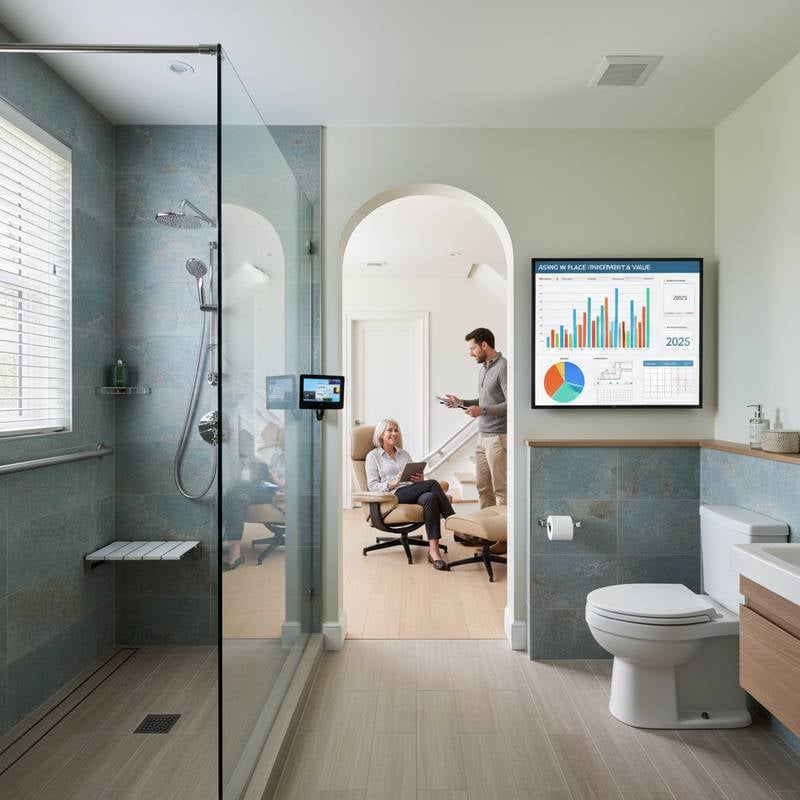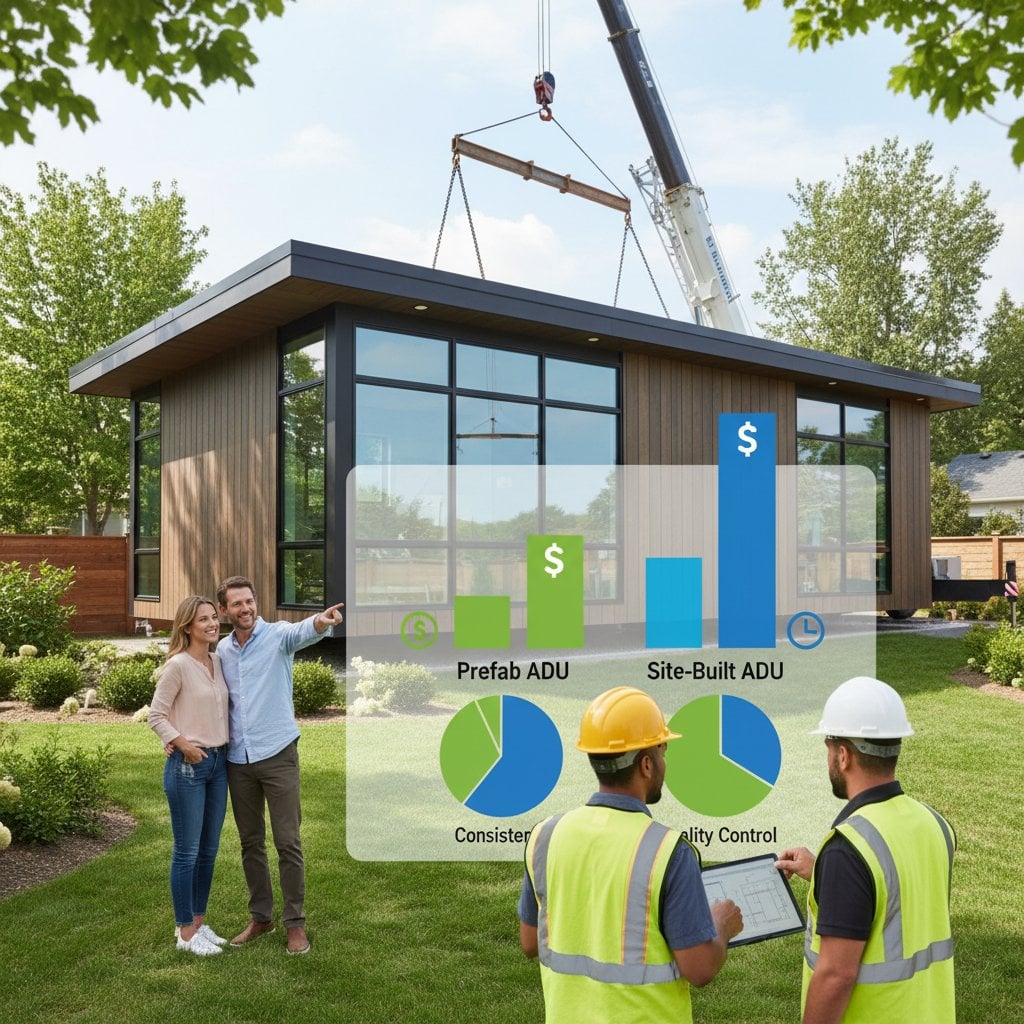Sustainable Materials Cost Planning for Fall 2025
Sustainable building materials have evolved beyond niche applications. They now shape construction budgets, enhance property values, and minimize long-term maintenance expenses. With rising demand, homeowners and builders require precise cost projections to make informed decisions. This guide provides detailed analysis of sustainable material pricing, return on investment calculations, and guidance on professional involvement for effective project management.
Guide Overview
This resource addresses essential topics to support your planning:
- Prominent sustainable materials with current cost estimates
- Factors driving price fluctuations from market dynamics
- Evaluations of do-it-yourself approaches versus expert installation
- Projections for savings from improved energy performance and longevity
- Strategies to optimize budgets without sacrificing environmental goals
Key Sustainable Materials and Pricing Insights
Recycled Steel
Significance: Recycled steel diminishes reliance on virgin mining operations while delivering superior structural integrity. It stands as a top choice for enduring frameworks in residential and commercial builds.
Pricing Details: Budget $1.20 to $2.00 per pound for recycled steel used in framing. For a typical mid-sized home, anticipate expenditures of $15,000 to $25,000 on steel components alone.
Installation Options: Structural handling demands precision tools and expertise. Engage a certified contractor to ensure compliance with safety standards.
Upkeep Considerations: This material withstands pests and moisture effectively, which translates to reduced repair budgets over time.
Bamboo Flooring
Significance: Bamboo grows rapidly, positioning it as a renewable substitute for traditional hardwoods. It imparts a natural elegance to living spaces.
Pricing Details: Installed costs range from $5 to $10 per square foot, varying by grade and finish quality.
Installation Options: Snap-together systems suit experienced homeowners for straightforward layouts. Adhesive or nailed applications necessitate professional skills to avoid issues like buckling.
Upkeep Considerations: Routine cleaning and periodic refinishing extend lifespan to 20 to 25 years.
Reclaimed Wood
Significance: Sourcing reclaimed wood diverts landfill waste and infuses projects with authentic texture for floors, supports, and decorative elements.
Pricing Details: Costs fluctuate between $8 and $20 per square foot, influenced by wood type, condition, and processing.
Installation Options: Cosmetic applications, such as wall panels, allow for homeowner execution. Load-bearing integrations demand professional assessment and fitting for structural reliability.
Upkeep Considerations: Apply protective sealants to guard against humidity and wear.
Insulated Concrete Forms (ICFs)
Significance: ICFs integrate thermal barriers with concrete strength, yielding walls that excel in energy retention, noise reduction, and resilience to severe weather.
Pricing Details: Allocate $150 to $200 per cubic yard for ICF systems, equating to $20 to $30 per square foot of finished wall surface.
Installation Options: Assembly appears simple, but aligning reinforcements and managing pours requires contractor proficiency to achieve airtight seals.
Upkeep Considerations: These forms demand little maintenance, with payback on energy reductions occurring in 5 to 10 years.
Recycled Glass Countertops
Significance: Incorporating recycled glass creates distinctive, robust surfaces from consumer waste, blending style with sustainability.
Pricing Details: Full installation averages $50 to $100 per square foot.
Installation Options: Custom cutting and seaming fall under specialist domains to guarantee seamless results.
Upkeep Considerations: Periodic sealing averts stains, supporting decades of service.
Market Forces Shaping Material Costs
Global supply chains and regional preferences dictate sustainable material expenses. For instance, recycled steel tracks fluctuations in fuel prices and scrap metal volumes. Bamboo imports face adjustments from trade policies and logistics expenses. Demand surges for vintage aesthetics elevate reclaimed wood premiums.
Forward planning secures favorable rates. Experts advise securing bulk supplies in advance, particularly for initiatives timed with high-activity construction periods.
Assessing Long-Term Returns
Opting for sustainable options curbs operational expenses and elevates market appeal. Research indicates that homes with superior energy features command 3 to 5 percent higher sale prices. ICF implementations slash climate control bills by 20 to 30 percent. Resilient selections like bamboo and reclaimed wood extend intervals between replacements, yielding substantial cumulative savings.
Balancing DIY Efforts and Expert Input
- Suitable for DIY: Snap bamboo installations, minor reclaimed wood features, or applying low-VOC paints.
- Require Professionals: Erecting steel frameworks, assembling ICF barriers, crafting countertops, or installing weight-bearing reclaimed elements.
Verify adherence to regional regulations. Many jurisdictions stipulate expert supervision and approvals for modifications impacting stability or systems.
Budget Optimization Strategies
- Secure Volume Discounts: Negotiate reductions on substantial quantities of bamboo or reclaimed products.
- Repurpose Existing Resources: Inspect and integrate on-site salvageables like timber or aggregates prior to new acquisitions.
- Target Impactful Investments: Emphasize enhancements in insulation, fenestration, and core efficiency over surface-level changes.
- Source Locally: Explore regional processors or reclamation facilities for competitive pricing on salvaged goods.
Criteria for Engaging Professionals
Select licensed experts for scenarios involving:
- Alterations to building stability
- Operations needing advanced machinery
- Compliance with inspection protocols
- Securing extended guarantees that enhance property transferability
Assess candidates through client testimonials, credential verification, and comprehensive proposals. Insist on breakdowns distinguishing labor from supplies for clarity.
Frequently Asked Questions
Which sustainable material yields the strongest returns?
ICFs and advanced insulation deliver quickest recoveries via reduced energy demands.
Does bamboo flooring hold up in moist climates?
It performs well with adequate sealing. Engineered variants outperform solid types in damp environments.
Is reclaimed wood viable for exterior use?
It works if pre-treated and coated to resist elements and pests.
Do sustainable choices always demand higher initial outlays?
No. Recycled steel often matches conventional rates, while premium items like glass surfaces justify costs through endurance and appeal.
How to verify a material's sustainability?
Seek endorsements like FSC labeling for timber or independent lifecycle assessments.
Sustaining Your Eco-Investment
Sustainable selections thrive under proactive stewardship. Factor initial investments against gains in efficiency, care requirements, and future worth for a comprehensive fiscal view. Pairing judicious procurement with specialist advice minimizes overall expenditures and fosters a resilient, healthful living environment. These decisions build enduring benefits across seasons.










